Axis of ExileThree axes cross on the lower level of the Libeskind building, symbolizing three historical developments of Jewish life in Germany: the Axis of Exile, the Axis of the Holocaust, and the Axis of Continuity. The last Axis leads to a staircase which directs visitors to the entrance of the permanent exhibit, located in the new building.
|
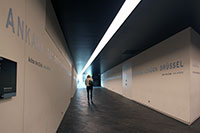 |
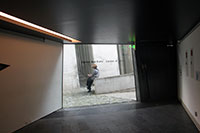 |
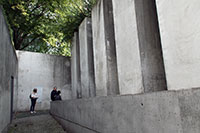 |
| |
|
Garden of ExileThe Axis of Exile leads to the Garden of Exile, located outside on the south side of the Libeskind building. The 49 piers topped with olive trees are erected on slanting ground. Like so much of the plan of the building, here the ground is supposed to give one a sense of dizziness or disorientation. The olive bushes are overhead, unreachable. All this is intentional because Libeskind designed this spatial experience to suggest the disorientation and instability felt by those who were forced to flee and exiled from Germany.
|
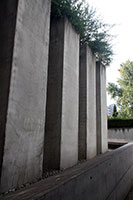 |
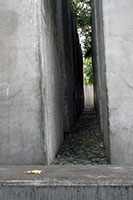 |
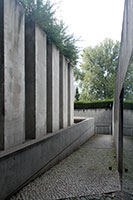 |
| |
|
Stairs and windowsStairs and hallways have odd cross bars and beams; window have little relation to the floors, slashing through floors and ceilings. |
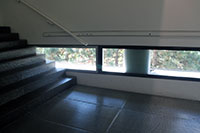 |
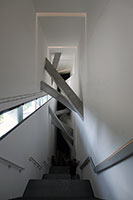 |
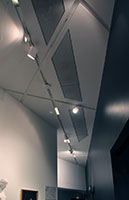 |
| |
|
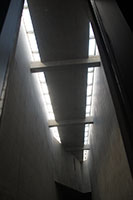 |
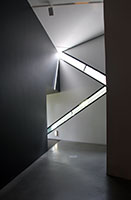 |
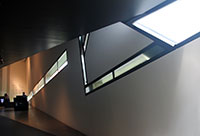 |


 Click here to return to index of art historical sites.
Click here to return to index of art historical sites.
 Click here to return to index of artists and architects.
Click here to return to index of artists and architects.
 Click here to return to chronological index.
Click here to return to chronological index.
 Click here to see the home page of Bluffton University.
Click here to see the home page of Bluffton University.

